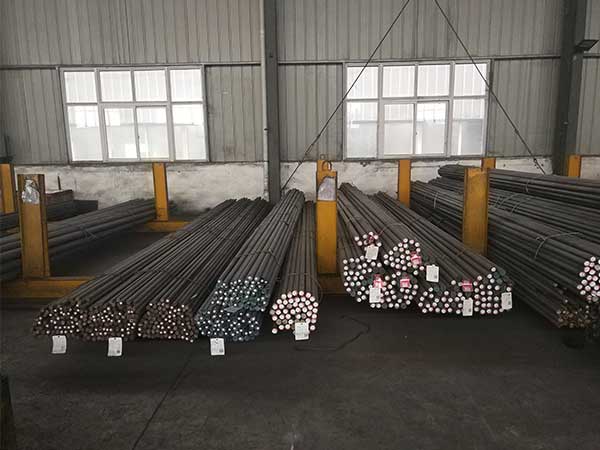
The forging materials are mainly carbon steel and alloy steel of various compositions, followed by aluminum, magnesium, copper, titanium and the like and alloys thereof. The raw state of the material is bar, ingot, metal powder and liquid metal. The ratio of the cross-sectional area of the metal before deformation to the cross-sectional area after deformation is called the forging ratio. Correct selection of forging ratio, reasonable heating temperature and holding time, reasonable initial forging temperature and final forging temperature, reasonable deformation and deformation speed have a great relationship to improve product quality and reduce cost.
Conventional small and medium forged materials use round or square bars as blanks. The grain structure and mechanical properties of the bar are uniform and good, the shape and size are accurate, and the surface quality is good, which is convenient for mass production. As long as the heating temperature and deformation conditions are properly controlled, high-quality forgings can be forged without requiring large forging deformation.
Ingots are only used for large forgings. The ingot is an as-cast structure with large columnar crystals and a loose center. Therefore, it is necessary to break the columnar crystal into fine crystal grains by large plastic deformation, and loosely compact, in order to obtain excellent metal structure and mechanical properties.
The powder metallurgy preform which is pressed and sintered can be made into a powder forging by hot forging without flashing. Forging powder is close to the density of general die forgings, has good mechanical properties, and has high precision, which can reduce subsequent cutting. The powder forgings have a uniform internal structure and are not segregated and can be used to manufacture workpieces such as small gears. However, the price of powder is much higher than the price of ordinary bars, and its application in production is limited.
By applying static pressure to the liquid metal poured in the mold to solidify, crystallize, flow, plastically deform and form under pressure, a die forging of desired shape and performance can be obtained. Liquid metal die forging is a forming method between die casting and die forging, and is particularly suitable for complex thin-walled parts which are difficult to form by general die forging.
Forging materials in addition to the usual materials, such as various components of carbon steel and alloy steel, followed by aluminum, magnesium, copper, titanium and other alloys, iron-based superalloys, nickel-based superalloys, cobalt-based superalloys The deformed alloys are also finished by forging or rolling, except that the alloys are relatively narrow in plasticity, so the forging difficulty is relatively large, and the heating temperature, opening and forging temperature and final forging temperature of different materials have strict requirements.


